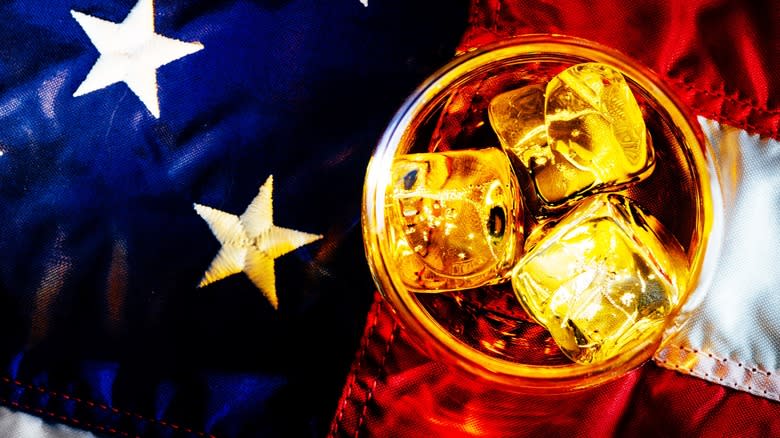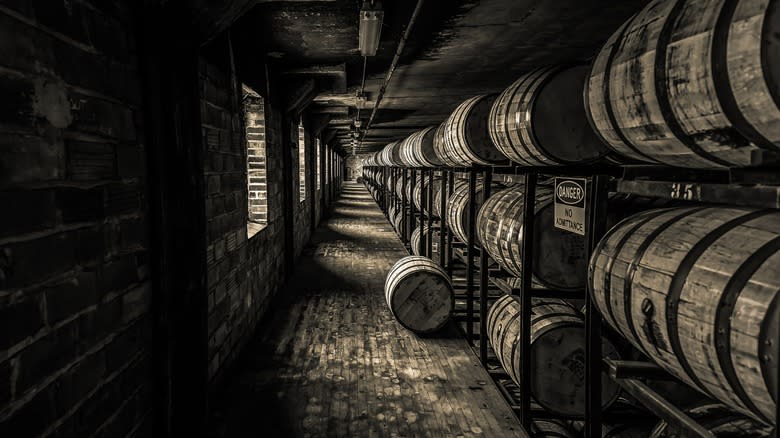The World's Very First Bourbon Dates Back To The 18th Century

For being such an iconically American spirit, it's fitting that the birth of bourbon would begin in the same century that the United States declared its independence from Britain. Back in the 1700s, America was still a budding country of frontiersmen clawing after the promise of prosperity offered by the New World. The rough living and lack of infrastructure didn't make good conditions for thorough documentation, so no one knows for sure who exactly invented bourbon.
Elijah Craig was a Baptist minister in Kentucky with some political weight and he's sometimes given the honor, but while he did make bourbon, there's serious doubt as to whether he was the first. Evan Williams built the nation's first commercial whiskey distillery in Kentucky in 1783, though he probably didn't start off by making traditional bourbon. In truth, it was likely a slow process whereby Scottish and Irish immigrants moving to Kentucky in the late 1700s began to incorporate their corn crop into their distilling. One way the government convinced settlers to move out west was to offer them free land.
In 1779, The Corn Patch and Cabins Rights Act was passed, which offered 400 acres of land to anyone who moved to Kentucky, built a cabin, and grew corn. The abundant corn farms that followed were directly responsible for the transition from barley to corn that makes bourbon unique among whiskeys and established Kentucky as the world's bourbon hub. Instead of a stroke of genius, bourbon's creation was probably a more practical use of what ingredients were readily available in the area.
Read more: The 27 Best Bourbon Brands, Ranked
Bourbon Has A Rich American History

Accurately depicting the historic rise of bourbon in America could fill an entire book, and the story is interesting enough to deserve one, but we can cover some basics. Prior to the Revolutionary War, whiskey wasn't all that common in America. Rum was the drink of choice in the colonies, the majority of which came from British colonies in the Caribbean. That all changed during the war when Britain cut off the rum and molasses supply.
American whiskey quickly rose to take rum's place and hasn't relinquished the throne since. In the early years of the United States, there wasn't a common currency from town to town, which made it difficult to trade. So, people started using whiskey as a form of currency as well. The sudden absence of rum combined with the rising demand for whiskey as a trade currency likely forced distillers to get more creative. As we mentioned, because corn was abundant in the area, whiskey made from corn became common – heralding the bourbon boom that would come soon after.
Corn wasn't the only thing distillers were adding to whiskey, though. For nearly 100 years, the American whiskey market had virtually no oversight. This may sound like a free market economist's dream come true, but in reality, it meant whiskey mixed with shoe polish, tobacco spit, and other unsavory ingredients that were making people sick. The Bottled In Bond Act of 1897 didn't outlaw low-quality whiskey, but it did give a stamp of approval on anything labeled bottled in bond.
Read the original article on Tasting Table

 Yahoo Lifestyle
Yahoo Lifestyle 
